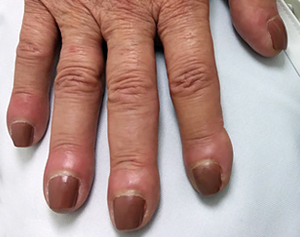By Dermatologist Dr. Ashley Reed

Did you know that most people have four-legged organisms living on their skin? They’re called Demodex mites and I see them in biopsy specimens all of the time, mostly as an incidental finding. In fact, most people have Demodex mites on their skin. This news can be shocking! In most cases, the Demodex mites are just “hanging out” in sebaceous (oil) glands and hair follicles and are not causing skin disease.
The Connection Between Demodex and Rosacea
One exception is thought to be some cases of rosacea, the papulopustular variant in which patients have red bumps and pimples. These patients may have an increased number of Demodex mites on their skin or an increased immune response which is manifested as a hypersensitivity reaction to the mites. Ivermectin which is available as a cream and is sold as Soolantra® or pill (Stomectol®) is a targeted treatment for the mites that can help in some cases of rosacea that are resistant to more traditional therapies. ⠀⠀

This picture is from a biopsy of the face (near the lower eyelid) which I read recently in the path lab. The Demodex mite was an incidental finding in a biopsy of an actinic keratosis, a potentially precancerous skin lesion, in sun-damaged skin. The image shows a granulomatous reaction to a Demodex mite and possibly a ruptured hair follicle. I made a note in the biopsy report that the patient may also have rosacea related to Demodex. What is interesting about this case is that the Demodex is outside of the hair follicle and surrounded by granulomatous inflammation. Perhaps showing a more direct link between rosacea (and possibly a type of rosacea known as granulomatous rosacea) and the Demodex.⠀⠀
FUN FACTS:
- Two types of Demodex live on human skin: (1) Demodex folliculorum found in hair follicles and (2) Demodex brevis found in sebaceous glands.⠀⠀
- Demodex are microscopic in size so they cannot be seen with the naked eye.
- It is considered to be a commensal organism, not a parasite. A commensal organism derives food and shelter from its host but does not harm or help its host. But, you could argue that in some cases of rosacea Demodex may be acting more like a parasite!
- Demodex mites live for approximately 14-16 days. They reproduce while living on your skin.
























